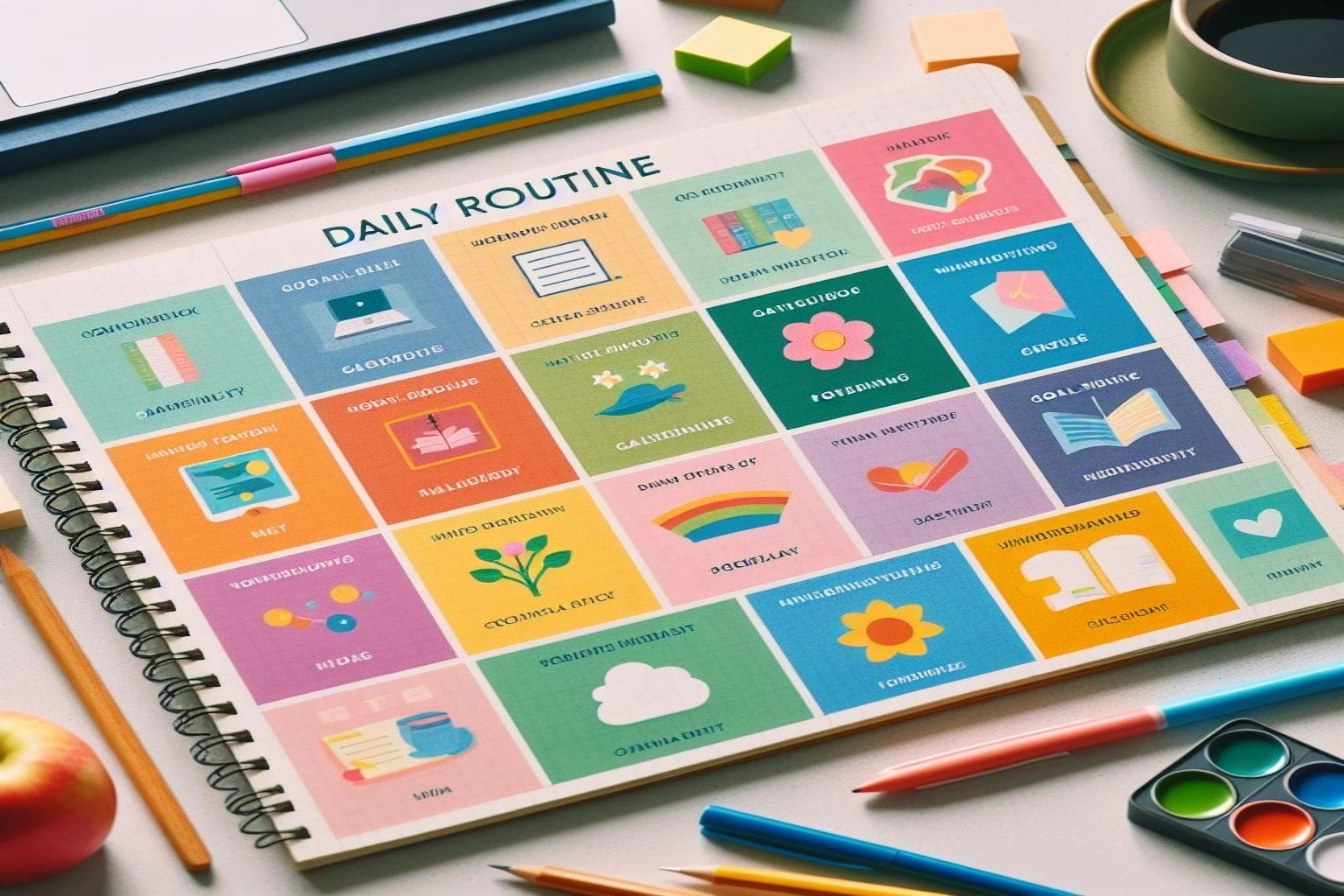
We’ve all been there. You wake up one morning and have an epiphany that enough is enough – it’s time to make a major change in your life. Maybe you commit to finally getting in shape, cleaning up your home environment, quitting a bad habit, furthering your education, or any number of positive personal goals.
The commitment and motivation feel so real in that moment. You tell yourself “today is the day I turn over a new leaf.” But then, inevitably, you slide back into your old, comfortable patterns within a matter of days or weeks. You feel like a failure and that you’ll never change.
Transforming yourself and turning over a new leaf is possible, but it takes more than a single moment of commitment. Lasting change requires working through several stages of change and overcoming the hidden psychological barriers that are holding you back.
In this article, we will walk through how to successfully turn over a new leaf in your life by:
- Understanding the nuanced stages of personal change
- Uncovering and addressing the hidden costs of change
- Making a plan to set yourself up for success
- Recovering quickly when you slip up
- Practicing self-compassion each step of the way
Let’s get started.
## The Stages of Change and Why Turning Over a New Leaf Is Not Instant
Part of the reason change efforts often fail is because we view “turning over a new leaf” as a single event – a light switch that flips from off to on. In reality, change unfolds gradually through several predictable stages.
Stage 1: Pre-Contemplation
In the pre-contemplation phase, you are in denial about the problem behavior or aspect of yourself that needs work. You likely feel content with the status quo and have no interest in changing. For example, if you wanted to quit smoking marijuana but were in pre-contemplation, you would insist you don’t have an issue with weed and have no desire to cut back or quit.
People often stay stuck in pre-contemplation for years before developing awareness that a problem exists. Loved ones may point out issues, but you remain in denial.
Stage 2: Contemplation
You’ve realized you have a problematic behavior but remain ambivalent about making actual changes. The logic of changing is apparent to you, but it conflicts with your desire to stay the same.
For instance, you may realize smoking weed causes problems at work and in your relationships, so there are practical reasons to quit. But you also crave the relaxation and escape it provides. The costs and benefits seem to balance out, so you feel stuck in contemplation. Most people seeking self-help are in the contemplation phase – aware of an issue but uncertain how to progress.
Stage 3: Planning
At this stage, you’ve decided you want to change and begin actively planning how to do it. This may involve steps like:
- Listing your motivations and goals for change.
- Identifying obstacles that could undermine success.
- Researching different methods and strategies to enable change.
- Choosing a specific plan and timeline for implementing it.
Thoughtful planning vastly increases the odds you’ll follow through with action. Skipping this stage often leads to failure. Don’t let eagerness for change hurry you through.
Stage 4: Action
Now you begin actively working to modify your behavior by implementing the plan you developed. This requires breaking old patterns and forming new habits and routines. In the quitting weed example, this could involve removing paraphernalia from your home, avoiding friends who smoke, joining a support group, replacing weed with new hobbies, etc.
Sustaining action is challenging because old patterns will keep reasserting themselves. But each episode of successful action builds self-efficacy and motivation. With practice, new behaviors start to feel natural.
Stage 5: Maintenance
In maintenance, your leaf has fully turned over. The change feels easy and automatic because it is now ingrained in your identity and habits. Or you may relapse and cycle back through earlier stages. To truly “turn over a new leaf”, you want your change to become second nature. This requires maintaining new behaviors for months or years.
For instance, someone who quit weed two weeks ago is still in action. 2 years later without using, they are in maintenance. They have permanently changed. Progress through these stages often happens gradually, with frequent backsliding between stages. Each backslide provides learning that builds motivation for future efforts. Eventually you build enough momentum to break through.
Uncovering Hidden Costs: Why We Resist Change We Know We Need
The contemplation stage is characterized by ambivalence – you see the logical benefits of change but feel conflicting desires to stay the same. Most failed change efforts flounder in contemplation. The question is: if you want to change, why don’t you just do it? What is the force that keeps pulling you back?
Lasting change becomes possible once you identity and confront the hidden costs your mind associates with change. Your mind is (often unconsciously) biased toward the status quo.
Let’s break down some examples of hidden costs:
Low Willpower/Difficulty of Change
Your mind knows change will require sustained hard work and discomfort. So part of you resists fully committing. For example, losing 20 pounds requires sweating through months of tough workouts and saying no to foods you love. Fully confronting that reality feels daunting.
Loss of Perceived Benefits
Your mind believes your bad habit provides benefits that you may lose. Even if objectively the habit is very destructive, subjectively you crave the rewards. Someone addicted to heroin believes drugs provide the only pleasure and escape in their life. The costs seem worth it subjectively, even if outsiders are baffled.
Disrupts Status Quo/Routine
Your mind clings to the status quo because it is familiar and predictable. Disrupting it requires an period of adjustment filled with uncertainty. Your mind unconsciously focuses on what you have to lose vs. gain.
Social Pressure
Your existing social circles may disapprove of your change and tempt you to backslide. Your mind wants to avoid loneliness. For example, trying to diet and improve health when your family and friends all eat terribly. They may tease your efforts.
Require Giving Up Coping Mechanisms
Bad habits often start as coping mechanisms for stress and trauma. Your mind believes change will remove a crucial crutch even if the habit now causes more harm. For instance, binge eating to deal with depression. Or smoking weed to relieve anxiety. Your mind doesn’t want to lose its perceived medicine.
Damage to Self-Image/Ego
Your self-narrative may be highly wrapped up in your bad habit, even if you consciously want to change. Quitting forces you to reconstruct your identity. Someone who prides themselves on eating whatever they want will struggle with dieting. It attacks their self-concept of having an iron will.
Other People Will Lose Faith
If you’ve tried and failed to change many times before, loved ones may have lost faith in you. Your mind wants to avoid disappointing them again.
Making a Plan to Optimize Your Chances of Success
Once you’ve spent time uncovering the hidden costs your mind associates with change, the next stage is planning. The goal is to thoroughly prepare so that you can minimize obstacles when action begins. Important components of creating an effective change plan include:
Choose the Right Change Strategy
There are always multiple ways to pursue a goal. One approach will be optimal for you. Take time to research different options. For example, if you want to start exercising more, should you join a gym, take up running, follow YouTube workouts at home, join a team sport, etc? Evaluate approaches based on your personality, preferences, obstacles, and learning style. Don’t assume one size fits all.
Anticipate and Remove Triggers
Based on past experience and knowledge of your patterns, write down probable triggers or situations that would cause backsliding. Then brainstorm ways to address them. If you tend to binge on sugary foods when you feel stressed, figure out go-to healthy stress relievers. If you smoke weed when hanging with certain friends, see them less.
Start Slow and Easy
To build early momentum, begin with changes that feel very achievable. This builds confidence and positive reinforcement. Don’t expect an overweight couch potato to run a marathon on day one. Have them start walking 10 minutes a day instead. Or tackle easiest room (like bathroom) when beginning to declutter.
Lean on Social Support
Inform people in your life you’re making this change and politely ask them to support you. Most will happily oblige and help motivate you. Positive peer pressure is powerful. Enlist workout buddies, share healthy recipes, get an online sobriety sponsor, etc. Don’t feel like you need to go it all alone.
Troubleshoot Friction Points
Change often fails due to mundane logistical issues, especially early on. Overprepare to smooth the path. For example, pack healthy snacks so you don’t have to rely on vending machines. Have proper workout clothes and shoes ready to eliminate excuses. Set phone alarms so new habits become automatic. Automate and schedule what you can.
Consider Pros vs. Cons of Change
List out objective pros/cons of changing vs. staying the same. Review and add to it when you need motivation. Your mind can play tricks on you by inflating the downside of change.
Make Gradual Changes
Trying to change everything overnight is begging for failure. Make one or two modest changes at first to build confidence. Then layer more on when those stick.
Celebrate Small Wins
Any progress deserves recognition. By celebrating baby steps, you reinforce desired changes. Don’t wait until you’ve “succeeded” to feel pride and encouragement.
Schedule Regular Check-Ins
On a calendar, schedule time every few days to reflect on what’s going well with the change plan and what needs adjustment. Consistent course correction prevents backsliding. Thorough planning removes obstacles, builds confidence, and sets you up to turn over that new leaf for good.
What To Do When You Backslide (Because You Will)
Once you move into the action phase, expect that you will stumble. Old habits and patterns will reassert themselves automatically. Early on, it is very unlikely you will completely flip the switch and never look back.
When you hit those minor backslides:
1. Remind yourself it’s normal and anticipated. This is a marathon, not sprint.
2. Do not beat yourself or think you’re back at square one. You retain everything already gained.
3. Reflect insightfully on what caused the backslide and how you can adapt to prevent it in the future. Do not judge yourself.
4. Emphasize all the progress you’ve made rather than just the setback. One mistake amidst a larger positive trend is good!
5. Consider if your change plan needs tweaking to remove obstacles you encountered. Don’t be rigid.
6. Allow time to mentally reset, then get back on the horse. Tomorrow is a chance to start fresh.
7. Fake it till you make it. Act as if you never slipped up at all. Self-perception shapes reality.
With relentless persistence through occasional backslides, new leaf fully turn. The next section provides guidance to maintain compassion for yourself through the highs and lows of change.
Practicing Self-Compassion on Your Change Journey
The final piece of the puzzle is nurturing self-compassion at each stage of your journey. Change is hard, so you will need to be your own best cheerleader.
Here are some ways to talk to yourself with kindness and remain motivated:
Celebrate How Far You’ve Come
Regularly remind yourself how the new leaf has already partially turned. Don’t take that for granted. Explicitly appreciate your wins.
Forgive Yourself For Struggling
Everyone trips up, especially early on. Expect it and have grace when it happens. If you had a nasty fall while learning to walk as a toddler, should you have given up permanently? Of course not. Forgive yourself and keep working.
Note How Change Is Getting Easier
Progress builds momentum. Look back and recognize how more change now feels automatic. Allow yourself to feel proud as change feels less daunting.
Recognize Your Courage
It takes immense courage to work through discomfort and uncertainty to better yourself. Explicitly acknowledge that you are brave for trying, even when you stumble.
Appreciate Small Efforts
Every positive choice, no matter how small, represents progress. Notice each one.
Be Patient With the Process
Remember that change unfolds slowly in stages. Trust that your efforts will accumulate into transformation even if it feels painfully gradual.
Compare Positively to Past
Look back at how stuck you used to be in old thought patterns a mere few weeks or months ago. Appreciate how far you’ve come.
Believe You Are Building Momentum
Have faith that your backslides are becoming fewer and farther between. Allow hope about your future progress to motivate you. By talking to yourself with compassion through ups and downs, you WILL turn over that leaf for good. No matter how many times it flips back over, keep going. I believe in you!
Summary
Lasting change does not happen with the snap of a finger. But by diligently working through the nuanced stages of change, uncovering hidden costs, planning for success, learning from missteps, and being your own biggest cheerleader, you absolutely can transform into who you wish to be.
What new leaf will you turn over? I hope this guide gives you strategies and encouragement to make it happen. You’ve got this!







